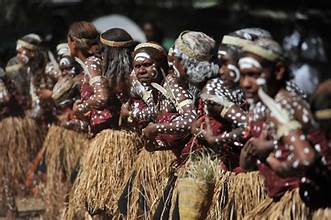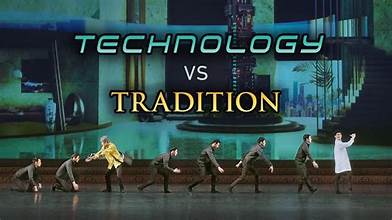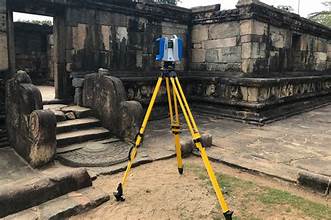
In an era marked by rapid technological advancements, preserving ancient traditions might seem like a daunting task. However, modern technology is playing a crucial role in reviving and safeguarding traditional cultures worldwide. From digital archiving to virtual reality experiences, technology is bridging the gap between the past and present, ensuring that cherished cultural practices continue to thrive in a digital age. This article explores how technology is preserving ancient traditions and how these innovations are contributing to cultural preservation.
The Role of Digital Archiving
One of the most significant contributions of modern technology to cultural preservation is digital archiving. Historical documents, manuscripts, artworks, and artifacts can be meticulously documented and stored in digital formats. This process not only protects these items from physical deterioration but also makes them accessible to a global audience.
Examples of Digital Archiving
- The Digital Public Library of America (DPLA): This platform aggregates millions of photographs, manuscripts, and other cultural artifacts from libraries, archives, and museums across the United States. It provides free access to these materials, making it easier for researchers, students, and the general public to explore and learn about historical traditions.
- The British Library’s Digital Collections: The British Library has digitized a vast collection of manuscripts and historical documents, including rare medieval texts and early printed books. These digital resources are available online, allowing scholars and enthusiasts to study and appreciate historical works without geographical constraints.
Virtual Reality and Augmented Reality Experiences
Virtual Reality (VR) and Augmented Reality (AR) are revolutionizing the way we experience and interact with traditional cultures. These technologies offer immersive experiences that can transport users to historical events, ancient rituals, and traditional practices.
How VR and AR Are Used
- Cultural Heritage Sites: VR technology allows users to virtually visit and explore cultural heritage sites that might be inaccessible due to geographical or financial reasons. For instance, VR tours of ancient cities like Pompeii and Machu Picchu enable users to experience these historical sites as they were in their prime.
- Interactive Cultural Experiences: AR apps can overlay historical information and interactive elements onto real-world environments. For example, an AR app might provide information about traditional festivals or ceremonies when users point their devices at specific locations or objects.
Social Media and Online Communities
Social media platforms and online communities have become vital tools for sharing and preserving traditional cultures. These platforms allow individuals and groups to showcase traditional practices, share cultural stories, and connect with others who have similar interests.
Examples of Social Media’s Impact
- YouTube Channels and Social Media Influencers: Many content creators and influencers use platforms like YouTube and Instagram to showcase traditional crafts, recipes, and rituals. These videos and posts reach a wide audience and help spread awareness about various cultural practices.
- Online Cultural Forums: Websites and forums dedicated to specific cultural traditions provide spaces for enthusiasts and experts to discuss, share knowledge, and collaborate on preservation projects. These online communities often include resources such as tutorials, articles, and historical information.
The Impact of Technology on Language Preservation
Language is a core component of cultural identity, and technology plays a vital role in preserving endangered languages. Digital tools are being used to document, teach, and revitalize languages that are at risk of disappearing.
Technological Contributions to Language Preservation
- Language Learning Apps: Apps like Duolingo and Rosetta Stone offer language courses for a variety of languages, including those that are less commonly spoken. These apps make it easier for users to learn and practice endangered languages.
- Digital Dictionaries and Databases: Online dictionaries and databases are being developed to document and preserve endangered languages. These resources provide detailed information about vocabulary, grammar, and pronunciation, helping to ensure that these languages remain accessible to future generations.
Collaborations Between Technology and Cultural Institutions
Many cultural institutions are embracing technology to enhance their preservation efforts. Museums, archives, and cultural organizations are partnering with tech companies to create innovative solutions for safeguarding cultural heritage.
Examples of Successful Collaborations
- The Google Arts & Culture Project: This initiative collaborates with museums and cultural institutions worldwide to create digital exhibits and virtual tours. It allows users to explore artworks, artifacts, and historical sites from around the world, fostering a greater appreciation for diverse cultures.
- Crowdsourcing and Citizen Science Projects: Some cultural institutions use crowdsourcing to engage the public in preservation efforts. For example, projects like the Smithsonian Transcription Center invite volunteers to transcribe historical documents, making them more accessible and searchable.
Conclusion
Modern technology is proving to be a powerful ally in the preservation of ancient traditions and cultural heritage. Through digital archiving, VR and AR experiences, social media, language preservation tools, and collaborations between technology and cultural institutions, we are witnessing a new era of cultural revival. These innovations not only protect and celebrate traditional practices but also ensure that they continue to inspire and educate future generations. As technology continues to advance, it is essential to leverage these tools thoughtfully and collaboratively to preserve the rich tapestry of human culture for years to come.

